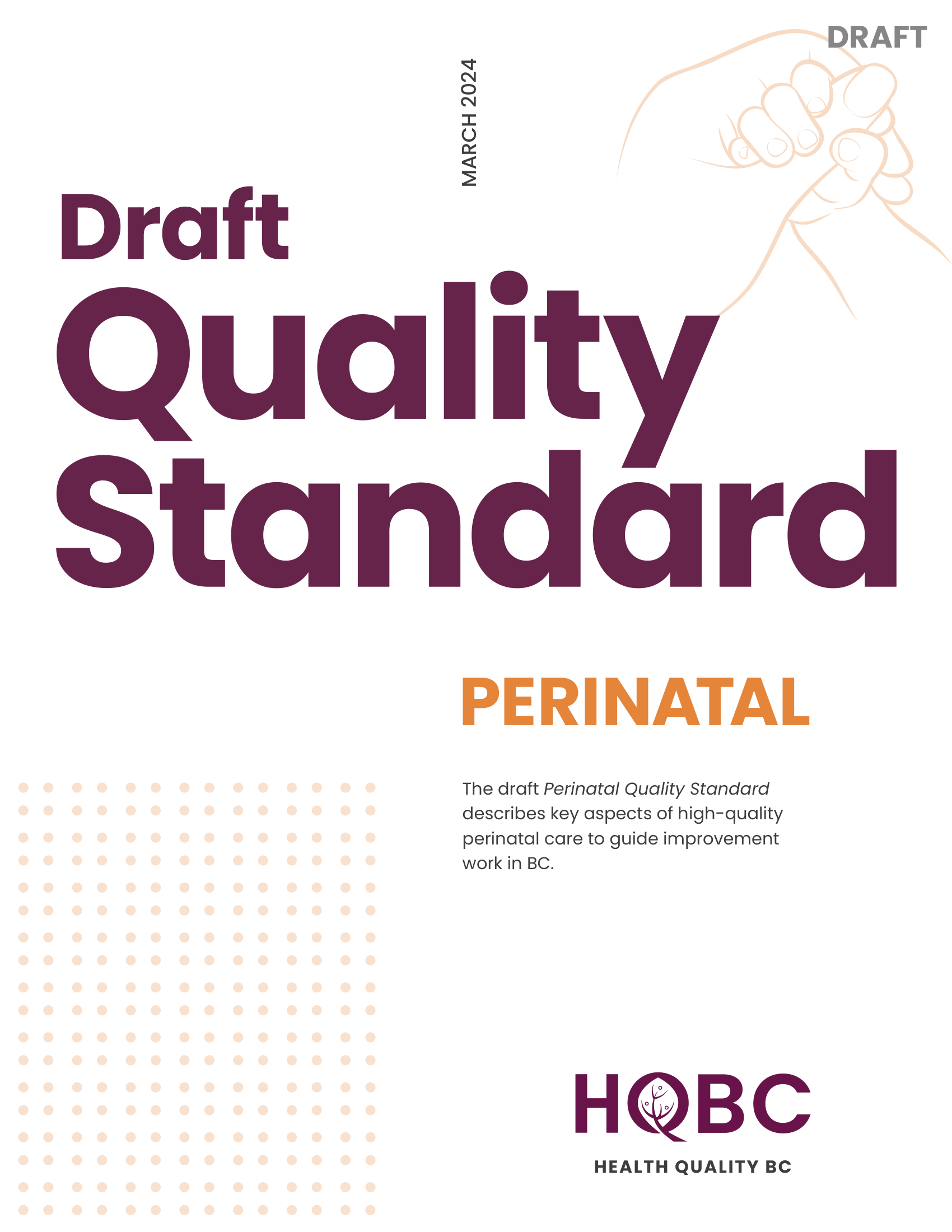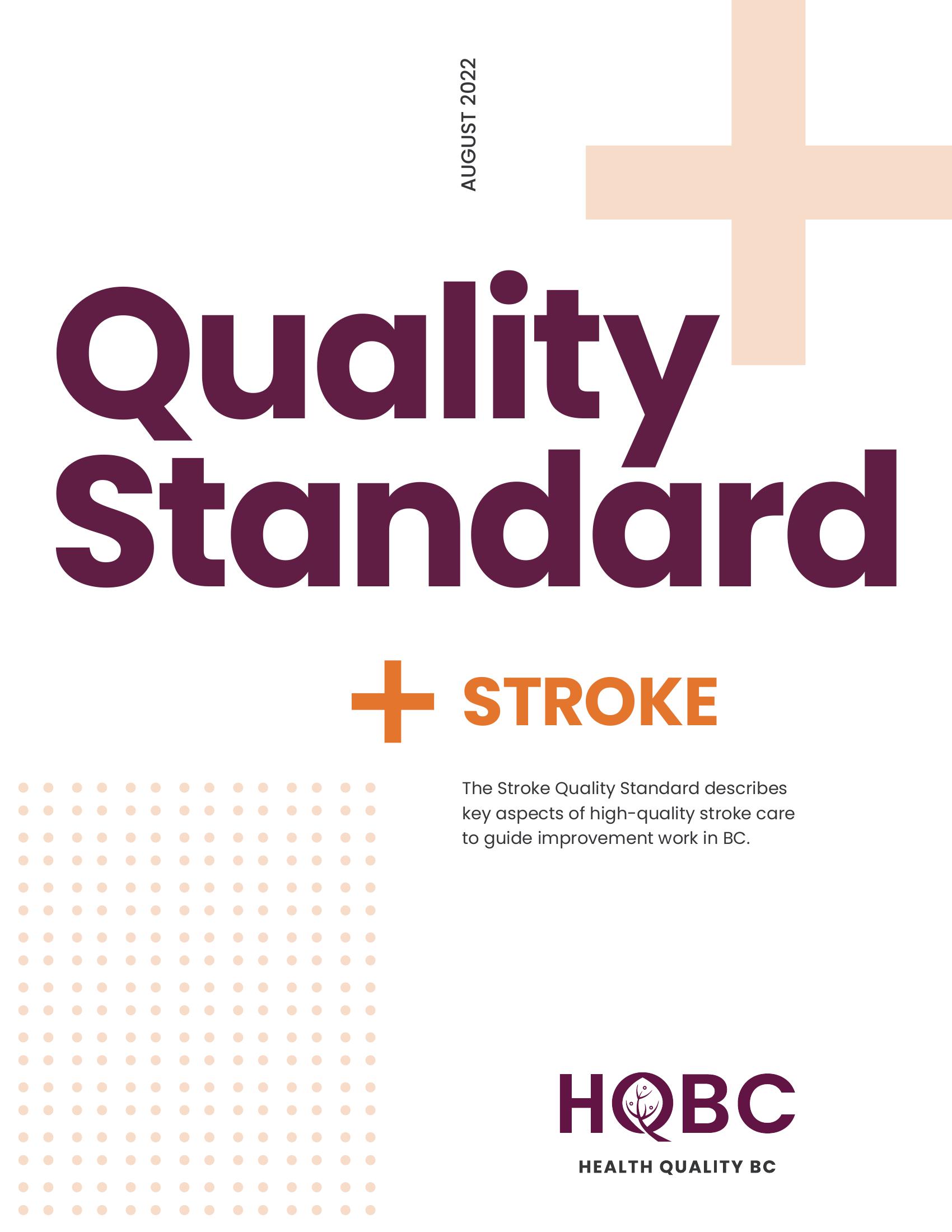Quality standards are tools for helping our health care systems deliver consistent, high-quality care to support the health of patients and the population. They describe key aspects of high-quality services for a condition or topic to guide opportunities for improvement. Quality standards feature concise future-focused statements and indicators to measure progress, that serve as common goals to which our health care system can aspire. They are evidence-based and progress toward them will lead to better health outcomes.
Quality standards support:
- People to understand the care offered by their health care system, and to make informed decisions in partnership with their health care teams;
- Health care professionals to make decisions about appropriate care; and
- Health care organizations to examine their systems and policies and improve the care they provide.
Quality Statements
Quality statements describe priority areas for improvement within the BC health system. Unwarranted variation occurs when the care someone receives is not what is expected and is not the result of their individual circumstances or choices. Quality statements aim to reduce areas of unwarranted variation by focusing improvement efforts where it is needed the most and outline the care that should be offered to people.
Quality Indicators
Quality statements require monitoring using associated quality indicators in order to track if care is meeting the standard or being improved. Quality indicators are intended to measure the progress towards meeting each quality statement.
The Draft Perinatal Quality Standard

The draft Perinatal Quality Standard will define the perinatal care that people should expect to receive or be offered, regardless of who they are or where they are treated in British Columbia.
We asked people involved with perinatal care to provide input on the draft Perinatal Quality Standard to help us improve the quality of perinatal care and prioritize areas for improvement. We received great feedback and are in the process of reviewing responses to our survey.
The Stroke Quality Standard

The Stroke Quality Standard for BC’s health care system that features nine quality statements focusing on specific areas of the patient journey where improvement can lead to better health outcomes. They’re accompanied by indicators to measure progress and guide improvement work.
In addition, the Patient, Caregiver and Family Guide describes key aspects of high-quality stroke care and supports people with stroke, as well as family members or caregivers, to make informed decisions in partnership with their health care teams.

